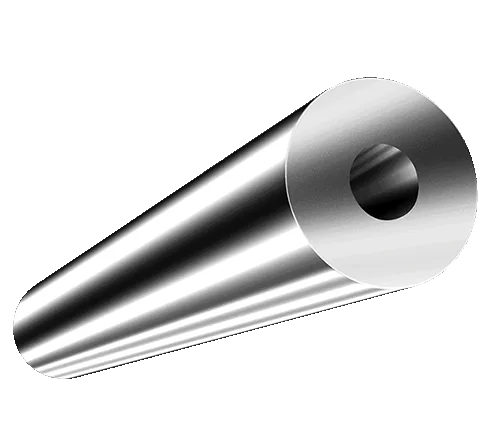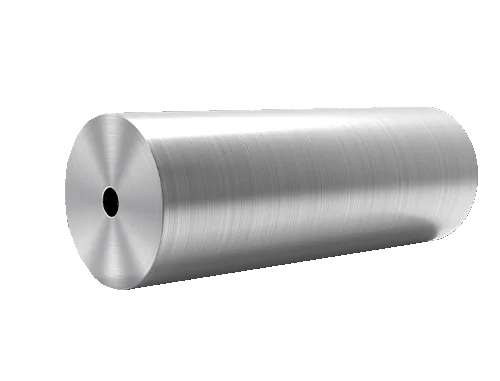Shandong Qilu lndustrial Co.,Ltd.
Exploring the Strengths and Applications of Hollow Tube Forged Parts
Introduction

In the realm of manufacturing, the utilization of hollow tube forged parts has gained significant traction owing to their unique properties and versatile applications. This article delves into the intricacies of hollow tube forged parts, exploring their strengths, applications, and the process behind their creation.
Understanding Hollow Tube Forged Parts
Hollow tube forged parts are metal components formed through the process of forging, characterized by their tubular structure with a hollow center. This manufacturing technique involves the application of compressive forces to shape metal into desired forms without compromising its integrity. The resulting parts exhibit superior strength, durability, and dimensional accuracy compared to other manufacturing methods.
Strengths of Hollow Tube Forged Parts
- Exceptional Strength-to-Weight Ratio: Hollow tube forged parts boast an impressive strength-to-weight ratio, making them ideal for applications where both strength and weight are critical factors.
- Enhanced Structural Integrity: The forging process aligns the grain structure of the metal, resulting in enhanced structural integrity and resistance to fatigue, cracking, and other forms of mechanical failure.
- Precise Dimensional Control: Manufacturers can achieve precise dimensional control with hollow tube forged parts, ensuring tight tolerances and consistency across large production runs.
- Cost Efficiency: Despite their superior quality, hollow tube forged parts can be produced cost-effectively, especially for high-volume manufacturing.
Applications of Hollow Tube Forged Parts
Hollow tube forged parts find extensive applications across various industries, including:
Aerospace
- Structural Components: Hollow tube forged part are integral in the aerospace industry for manufacturing structural components such as fuselage frames, wing spars, and tail sections. The combination of high strength and lightweight properties makes them ideal for maintaining structural integrity while minimizing overall weight.
- Landing Gear Parts: Components of landing gear systems, including struts, shock absorbers, and connecting rods, often utilize hollow tube forged part due to their ability to withstand high loads and impact forces during landing and takeoff.
- Engine Mounts: Hollow tube forged part play a crucial role in the construction of engine mounts, providing the necessary strength and stability to support aircraft engines under extreme operating conditions.
Automotive
- Suspension Components: Hollow tube forged parts are widely used in the automotive industry for manufacturing suspension components such as control arms, tie rods, and stabilizer bars. Their superior strength and rigidity contribute to improved vehicle handling and stability.
- Steering Linkages: Steering linkages, including tie rod ends and steering shafts, benefit from the durability and dimensional accuracy of hollow tube forged parts, ensuring precise steering control and responsiveness.
- Drive Shafts: Hollow tube forged drive shafts offer enhanced strength-to-weight ratio compared to solid alternatives, reducing rotational inertia and improving fuel efficiency in vehicles.
Oil and Gas
- Drill Collars: In the oil and gas exploration sector, hollow tube forged drill collars are essential components of drilling assemblies. Their robust construction and resistance to corrosion and high-pressure environments ensure reliable performance in challenging drilling operations.
- Downhole Tools: Various downhole tools used in well intervention and completion processes, such as fishing tools, packers, and perforators, incorporate hollow tube forged part for their durability and ability to withstand downhole conditions.
- Wellhead Equipment: Critical components of wellhead equipment, including casing hangers, tubing hangers, and blowout preventers, often utilize hollow tube forged part for their strength, reliability, and resistance to extreme temperatures and pressures.
Construction
- Crane Components: Hollow tube forged parts are employed in the construction of crane booms, jibs, and lift arms, providing the necessary strength and stability to lift and maneuver heavy loads safely and efficiently.
- Scaffolding Systems: Components of scaffolding systems, such as standards, ledgers, and diagonal braces, utilize hollow tube forged parts for their durability, dimensional accuracy, and ease of assembly, ensuring the safety of construction workers at elevated heights.
- Structural Supports: Hollow tube forged parts serve as key structural supports in various construction projects, including bridges, buildings, and offshore platforms, where they provide load-bearing capacity and resistance to dynamic forces and environmental conditions.
Medical
- Surgical Instruments: Hollow tube forged parts are utilized in the manufacturing of surgical instruments such as forceps, scissors, and retractors, where precision, durability, and corrosion resistance are paramount for ensuring surgical success and patient safety.
- Implantable Devices: Components of implantable medical devices, including bone screws, plates, and prosthetic implants, often incorporate hollow tube forged parts made from biocompatible materials such as titanium or stainless steel, ensuring compatibility with the human body and long-term performance.
- Diagnostic Equipment: Hollow tube forged parts play a role in the construction of diagnostic equipment such as imaging devices, biopsy needles, and endoscopes, where reliability, precision, and dimensional stability are essential for accurate diagnosis and treatment planning.
The Forging Process
The forging of hollow tube parts involves several key steps:
- Material Selection: High-quality metals such as stainless steel, titanium, and aluminum are selected based on the specific requirements of the application.
- Heating: The metal stock is heated to a precise temperature to improve its malleability and facilitate deformation.
- Forging: Compressive forces are applied to the heated metal using dies to shape it into the desired hollow tube form.
- Cooling and Finishing: The forged parts are cooled gradually to relieve internal stresses and then subjected to finishing processes such as machining, surface treatment, and inspection.
Case Study: Hollow Tube Forged Part Comparison

To illustrate the superiority of hollow tube forged parts, let’s compare them with conventionally machined components:
| Property | Hollow Tube Forged Part | Machined Part |
|---|---|---|
| Strength | High | Moderate |
| Weight | Lightweight | Moderate |
| Structural Integrity | Excellent | Good |
| Dimensional Precision | High | Moderate |
| Cost Efficiency | Cost-effective | Moderate |
Conclusion
Hollow tube forged parts represent a pinnacle of engineering excellence, offering unmatched strength, durability, and versatility across a myriad of applications. As industries continue to demand lightweight yet robust components, the significance of hollow tube forging in modern manufacturing will only grow.
FAQ
Q: Can hollow tube forged parts be customized to specific shapes and sizes?
A: Yes, hollow tube forged parts can be tailored to meet the exact specifications of a given application, offering flexibility in design and functionality.
Q: Are hollow tube forged parts suitable for high-temperature environments?
A: Absolutely, the superior heat resistance of metals used in hollow tube forging makes them well-suited for applications in high-temperature environments, such as aerospace and oil and gas industries.
Q: How does the cost of hollow tube forging compare to other manufacturing methods?
A: While initial setup costs for hollow tube forging may be higher, its cost efficiency over large production runs makes it a more economical choice in the long term compared to machining or casting.
In conclusion, the future of manufacturing is undoubtedly shaped by the remarkable capabilities of hollow tube forged parts, paving the way for innovation and advancement across various industries.
